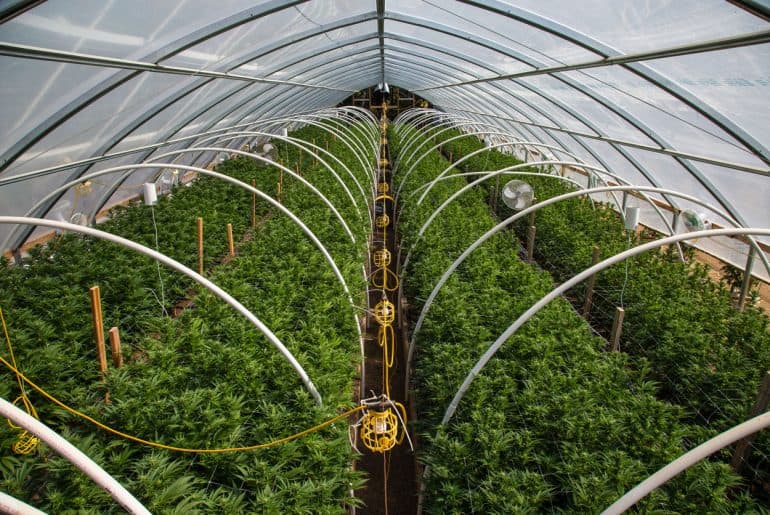If you are growing cannabis at home, we are assuming you aren’t doing it just for the fun of it, at least not primarily. Most people who grow cannabis at home do so with the aim of producing a high yield of very potent buds that can then be smoked, turned into extracts, and more.
That said, cannabis plants are somewhat fragile and delicate, which means that taking proper care of them is essential.
This means providing them with adequate amounts of light, nutrients, and the right temperatures and humidity levels. However, although doing all of these things will lead to a decent yield, if you want to maximize your yield, there are some strategies you can use.
Today, we want to talk about some of the best and most proven maximizing yield strategies out there. If you follow the tips or strategies that we are about to talk about below, increasing the yield from your cannabis plants should be more than doable. Let’s take a look and find out exactly how to maximize your cannabis but yields.
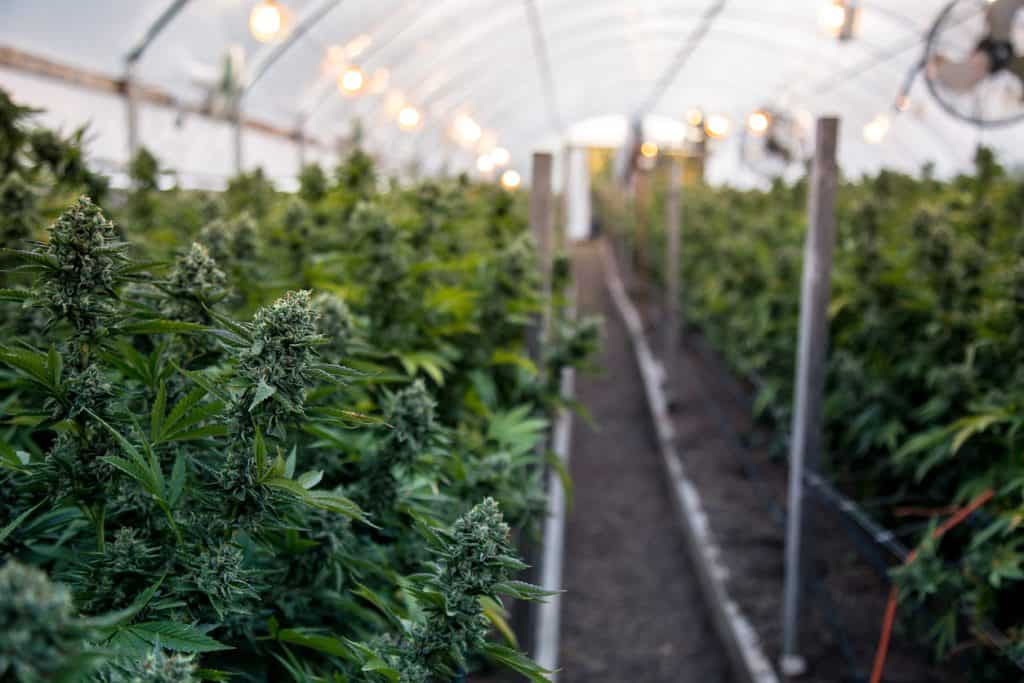
Trellis the Plant
One issue that might be preventing your cannabis plant from producing a maximum yield is if it is way too heavy, combined with the stalks or stems being too thin. If your plant stems and branches are too thin, they won’t be able to properly support the flowers and buds, which often results in a decreased yield.
However, if you provide your cannabis plants with some assistance and help them bear some of the weight, chances are that they’ll be able to focus a lot more energy on producing flowers and buds, therefore increasing the overall yield.
Using bamboo, other wooden structures, metal mesh, and anything else you can think of to tie up your cannabis plants could be more than enough. The main point here is that just like with tomatoes, you might want to help provide your cannabis plants with some support.
Cannabis Plant Training
One of the most popular methods for increasing cannabis yields is called a plant training. Specifically, here we are talking about a low stress training technique known as the tie-down method., which involves gently bending the plant with the aim being to increase light penetration, among other benefits.
This has to be done while the cannabis plant is still in the vegetative phase, and it works very well for plants growing indoors no matter the grow space. If your plant suffers from uneven growth, interlocking branches, or anything else of the sort, it can decrease the efficiency of the cannabis plant.
This is why you need to spread out the side branches from the main stem. This is done by separating them with string.
In essence, you are pulling the branches away from each other and tying them further down than they would otherwise grow using some kind of string, which results in them growing outwards much more than upwards, and this usually results in an increased yields.
That said, even with training, you still need to ensure that you provide your cannabis plants with proper water, nutrients, lights, and more.
The more lateral growth you can encourage in your cannabis plants, the likelier they are to increase their yields. This is a good low stress training technique as it is not likely to damage your plants, and it is something that works for both indoor and outdoor plants.
Low Stress Training and High Stress Training
Training techniques can be divided into low stress techniques and high stress techniques. Low stress techniques involve just manipulating the plants very gently, such as this tie down method we just talked about above.
Here, the aim is to bend the stem downwards and tie it to the edge of your pot, which helps to increase lateral growth and also maximizes light exposure. If you are new to cannabis growing, using low stress training is recommended.
You may also use what is known as the screen of green or SOG method, another low stress training technique.
The point here is actually to plant a lot of very small plants close to each other, create a grid of string above them, and then weave all of the plants through this grid to create a massive canopy. Although singular plants won’t have big yields, when combined, you’ll end up with a whole lot of buds.
There are also high stress training techniques, although these can be very damaging to plants, and are best avoided. High stress training techniques, although they may be dangerous, can result in fantastic yields.
Training Cannabis Plants by Topping
One of the most effective methods for increasing cannabis yields is by using a cannabis plant training method known as topping, a high stress training technique.
This simply refers to cutting off the top of your weed plant, that main cola growing at the top. If you do this, although cutting off the top cola sounds bad, it’s just like a hydra from Hercules, or in other words, it will grow back double.
To be specific, with this high stress training technique, if you cut off the top cola, two stems will grow back with two colas. You can actually do this multiple times, therefore effectively multiplying the amount of colas growing at the top of your plant, thus creating a much more productive growth pattern.
You can also do this high stress technique with other main colas and branches. If you keep cutting off the main cola, two should grow back in its place. This might sound very counterintuitive, but it works the vast majority of the time.
Yes, there may be cases where your plant is very stressed out and the colas won’t grow back, although if you take good care of your plant and all of the other parameters are ideal, this topping method should work just fine to increase the overall yield of your plants.
However, what you need to know here is that this high stress training has to be done in the vegetative state. If you cut off the cola of your cannabis plant while it is already flowering, it won’t grow back, and you’ll have just destroyed your weed plant.
Cannabis plant topping absolutely has to be done during the vegetative state, and be sure not to put your plants through too much stress.
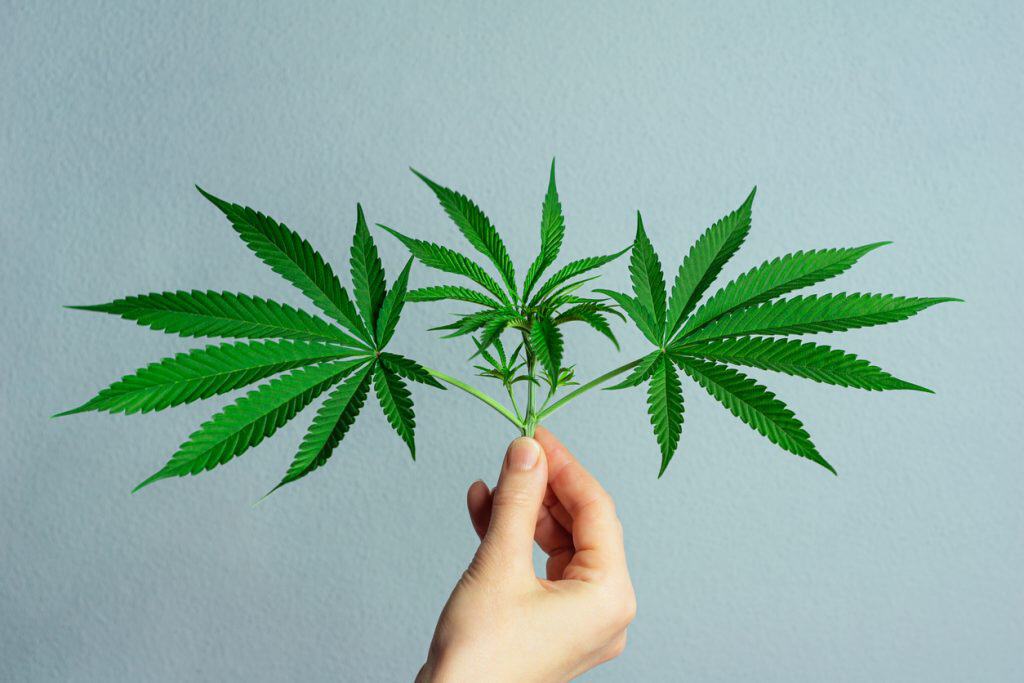
Main-Lining the Cannabis Plants
Another high stress option you have at your disposal, admittedly one of the more intense and dangerous options, is known as mainlining. Mainlining involves a combination of the tie down method with the topic method. What you do here is take your plant while it is still in its vegetative state and cut it down all the way to its third node.
You also want to remove any growth below this. You then take all of the remaining branches and tie them down so that to grow outwards or horizontally. You can keep repeating this process several times. The end result will be several main colas.
That said, this high stress training technique can be very dangerous because you are manipulating the plant very intensely and drastically.
If you go too heavy, you may cause irreversible damage. Moreover, using this mainlining method means that you also need to leave the plant in the vegetative state for much longer, because every time you cut something off or tie something down using high stress training, the plant requires a lot of due to recover. When it comes to performing some light defoliation, especially to help improve light distribution during cannabis cultivation, then this is one of the best growing techniques to use.
Use a Bigger Container or Specific Pot Types
OK, so whereas all of the above methods we have discussed so far involved manipulating the plant itself in order to increase the yield, there is a much simpler method. Perhaps one of the easiest ways to increase overall cannabis yields is by increasing the size of the pot or container that the plant is growing in.
Generally speaking, plants will keep growing so long as their root system can keep expanding. If you have a cannabis plant growing in a one gallon bucket, if you transfer that into a four gallon or five gallon bucket, it will grow much larger.
The more space those roots have to expand, the larger the part of the plant above the soil can become. Therefore, one of the best ways to increase the yield of your cannabis plants is to actually grow them outdoors, not using pods or containers, but simply planting them in the soil. This will allow for exponential root spread.
Another good idea here is to take advantage of what are known as smart pots, which are pots or buckets that are made out of breathable fabrics like cotton, canvas, and others. This great breathability allows the soil to be properly aerated, and to dry out if it is too wet. This ensures root health, therefore allowing the cannabis plant roots to grow faster and bigger.
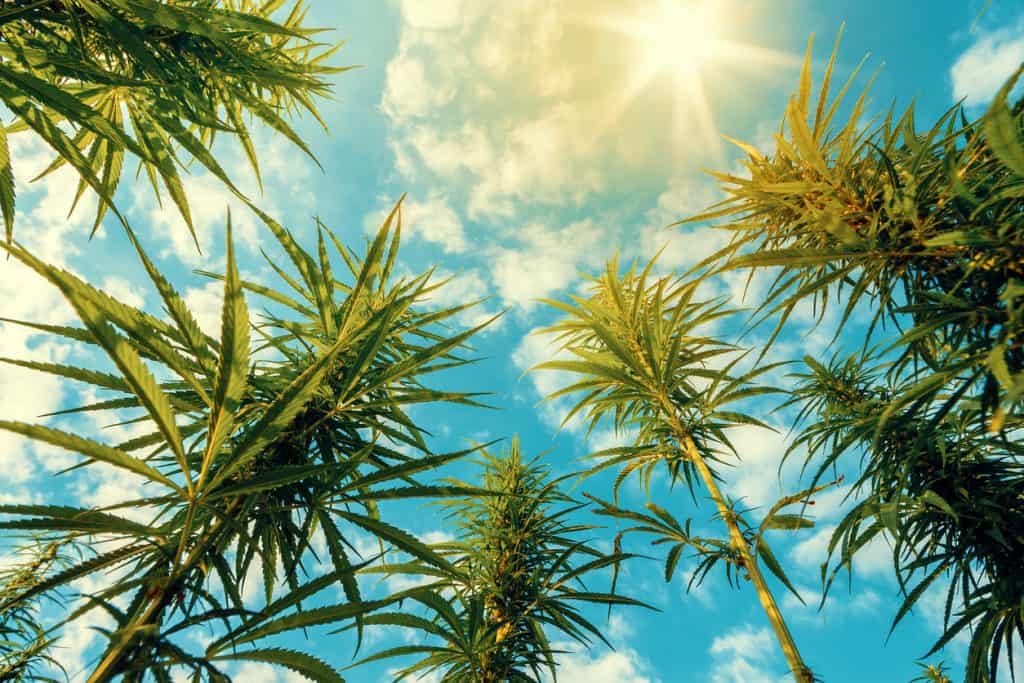
Providing Plants with More Light
Yet another very simple method to increase the yield that your cannabis plants produce is to increase the amount of light you provide them with. Ensuring that your grow light has the maximum amount of watts possible means that it also puts out the maximum amount of light that your cannabis plants can use to grow properly.
However, what you need to be aware of is that if you put your lights too close to your cannabis plants, or you provide them with too much light, you can cause light burn.
Therefore, if you have a 600 Watt light, keeping it between 18 and 30 inches from the plant is recommended, an 800 Watt light should be kept between 19 and 34 inches from your plants, and a 1000 Watt light should be kept anywhere between 21 and 36 inches from your plant.
Remember that sunlight is one of the most important fuel sources for your plant, and it requires it in order to perform photosynthesis.
Photosynthesis is when plants take nutrients, water, and other fuel sources and convert them into the food that they things to grow, mainly various types of sugars.
The more sunlight your cannabis plant gets, the more efficiently it can perform photosynthesis.
Furthermore, the larger your plant grows during the vegetative state, the more fuel it will be able to take in for the flowering stage, which is when it starts growing flowers. The more fan leaves and vegetation your cannabis plant has, the more sunlight it will be able to take in during the flowering stage.
On that note, another option add disposal is to provide your plants with increased supplemental lighting. The vast majority of people out there only provide their cannabis plants with light from above.
However, there is no reason why you can’t also provide your cannabis plants with light from the sides. Using side lighting will effectively illuminate all of the parts of your plant that are currently in the dark due to being overshadowed by other leaves.
Therefore, all of those smaller buds that grow on the bottom branches should end up being a lot bigger.
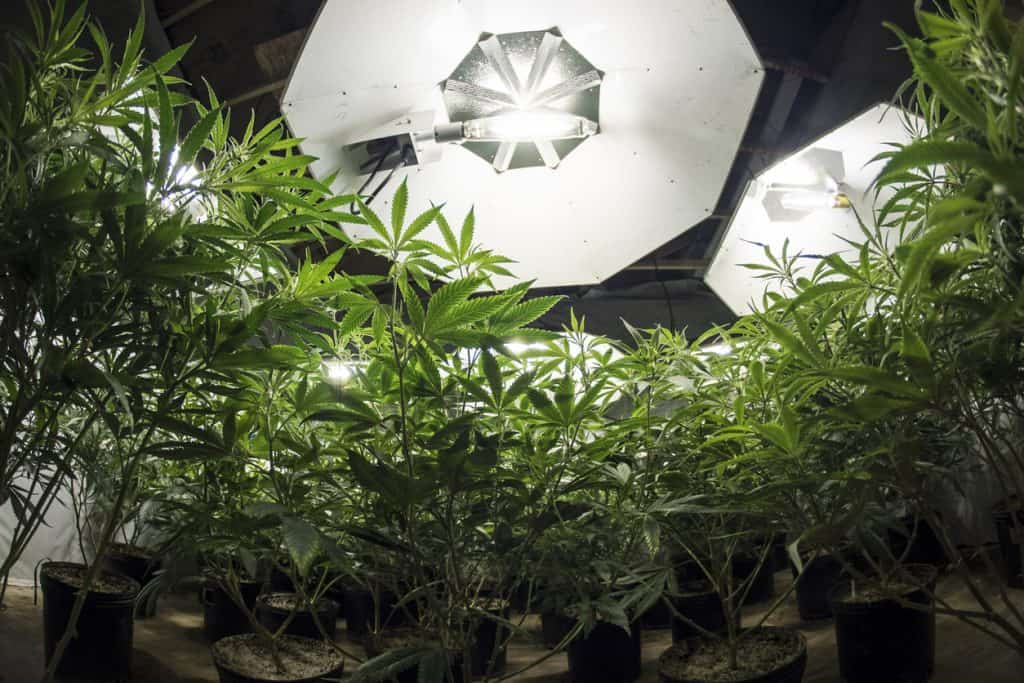
Defoliation
The next method that will help to increase the overall yield of your cannabis plants is to remove useless and dying leaves.
However, defoliation should never take place during the vegetative state, as this will cause damage and may inhibit plant growth. Rather, the defoliation of a cannabis plant should only be done during the flowering stage, when all of the energy is already being used to grow flowers.
When the plant is in its flowering stage, it will use the majority of its energy to grow flowers, but some of that energy will still be focused on growing fan leaves.
Therefore, to maximize the amount of energy being put into growing buds, you should cut away any fan leaves that are dead, dying, or are not exposed to light on a regular basis.
All of those fan leaves at the bottom of the plant that are covered by other leaves aren’t getting any light, and are therefore relatively useless.
These plants are likely using more energy to maintain their appearance than they are creating by performing photosynthesis.
Adequate Climate Control
Although this may sound like a no brainer, all too many people grow their cannabis science in subpar conditions. Providing your plants with too much or too little light, having them grow in conditions that are too hot or cold, or too humid or too dry, will all stunt their growth and cause decreased yields.
Therefore, you always want to make sure that your plants are in the proper humidity levels, with these being anywhere between 50 and 70%, as well as the proper temperature, which is anywhere between 70 and 85 degrees Fahrenheit when they are receiving light, or between 58 and 70 degrees Fahrenheit when they are not receiving light.
Of course, a big advantage that you have by growing your cannabis indoors is that you can easily control all of these factors.
Sure, this means that you need monitoring equipment such as hygrometers and thermometers, as well as either humidifiers or dehumidifiers, and heaters or air conditioners, but with all of these pieces of equipment, you should be able to easily maximize cannabis yields.
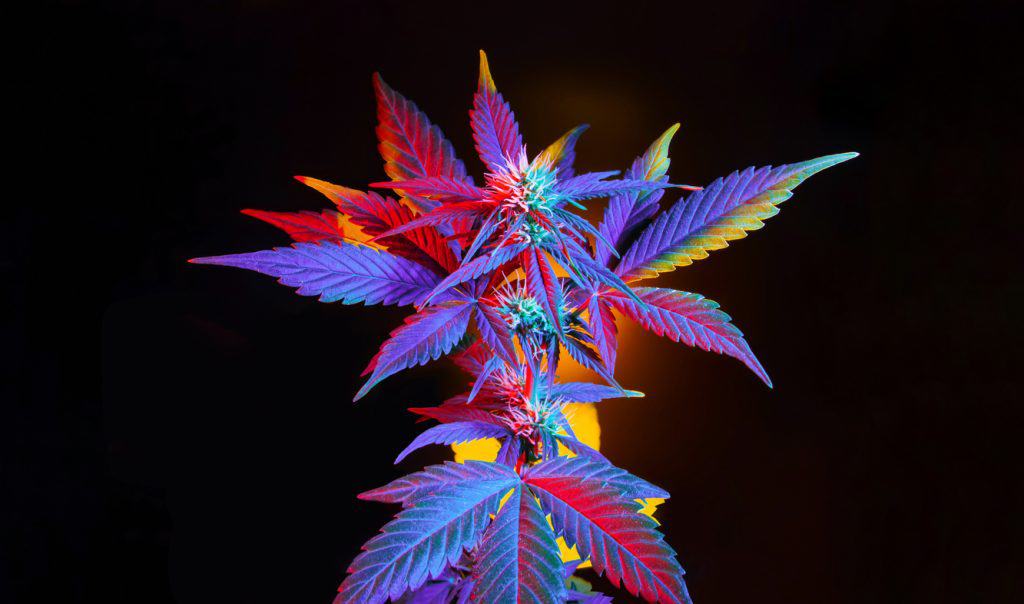
Keeping pH Levels Optimal
One of the most important factors for adequate plant growth is acidity or the pH level. This is very closely related to the overall health of the roots of your cannabis plant.
The roots are required for the cannabis plant to absorb nutrients and water from the soil, and to feed itself. Without strong and healthy roots, your cannabis plant won’t be able to take up those nutrients, and won’t be able to grow.
A big aspect of cannabis plant root health has to do with the acidity of the soil and the water that you are giving your plants. Generally speaking, cannabis plants enjoy slightly acidic soil, with a PH level anywhere between 6.0 and 7.0. This means that you have to do everything possible in order and keep the pH level within this range.
You therefore want to use monitoring equipment for both the water you feed your plants as well as the soil in which they live.
Whenever you see that the pH level is outside of that ideal range, you need to use the proper pH altering chemicals to adjust as needed. If you don’t do this, chances are that your roots will start to die, and will no longer be able to uptake nutrients.
Increase Nutrient and CO2 Levels
Yet another important factor when it comes to cannabis plant growth and achieving maximum yields is providing them with not only the proper nutrients, but also the right levels of them, which is very important for indoor growers especially. The three most important nutrients for cannabis plants are known as the NPK nutrients, otherwise known as nitrogen, phosphorus, and potassium.
When your plant is in the vegetative state, there should be a lot of nitrogen, moderate levels of phosphorus, and high levels of potassium. The nutrient needs for cannabis plants during the flowering stage are different than during the vegetative stage.
During the flowering stage, your cannabis plant should be getting low levels of nitrogen, medium high levels of phosphorus, and high levels of potassium. This means that you want to purchase some ideal cannabis plant fertilizers, and make sure that you are giving them the right amounts.
On that note, never think that giving your plant more nutrients than is recommended on the packaging is ideal. Providing your plants with too many nutrients results in what is known as nutrient burned, which effectively kills your plant.
Furthermore, something else that cannabis plants need to grow properly is carbon dioxide. With that being said, introducing additional carbon dioxide into a grow room is very difficult. It can actually be dangerous, and at the very least, the grow room has to be extremely well sealed so that the carbon dioxide cannot escape.
Growing the Right Strain Helps
Yes, there are many different techniques you can take advantage of to increase the overall yield of your cannabis plants. However, one of the simplest things that you can do right from the beginning is to choose the right kind of strain.
The simple reality is that there are hundreds, if not thousands of different cannabis strains out there, and they all have slightly different properties and yields.
There are strains that produce absolutely massive yields, and there are strains that you’ll have trouble producing even small yields with. Therefore, we recommend doing some extensive research into the different cannabis strains out there, particularly the ones that will produce the highest yields.
Furthermore, you do also want to pay attention to whether you are growing an indica or a sativa, as sativa plants tend to be very tall and skinny, whereas indica plants tend to be short and bushy. The only reason we noted this is because this can make a big difference when it comes to various stress training techniques.
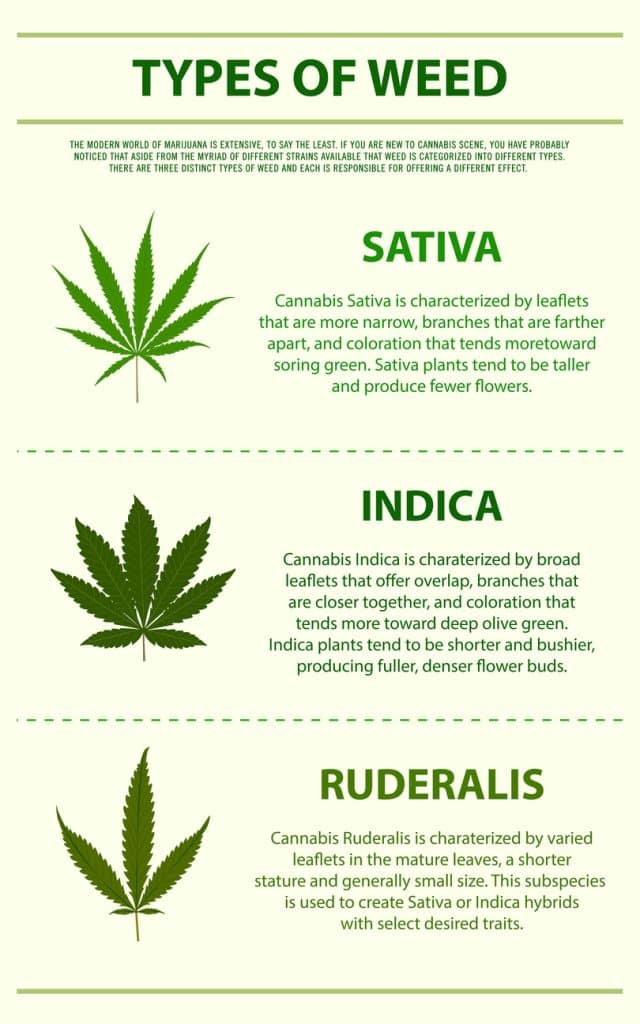
Add Some Sugar – Molasses
As mentioned above, plants use photosynthesis in order to convert fuel into the food they need to grow, which in part includes sugar. Therefore, one of the best things you can do to increase the health of your plant and the rate of its growth is to provide it with a bit more sugar.
Most people, however, recommend not adding plain sugar, but rather molasses. The reason for this is because molasses is also chalked full of minerals and other nutrients which can be extremely beneficial for your cannabis plants.
Use the Hydroponic Method
Although growing cannabis hydroponically requires a very intensive setup and a lot of know-how, it is very beneficial in terms of the overall yield of your cannabis plants. Using a hydroponic growth setup can increase yields by up to 20%, which is a whole lot.
The issue with hydroponics is that they take a lot of time to set up and can be very expensive, plus there is very little room for error. When you grow cannabis in soil, small errors don’t necessarily spell the end of your plans, but if you are growing cannabis hydroponically, even the smallest of errors can kill your cannabis. Having a closely controlled environment will go a long way in improving the results.
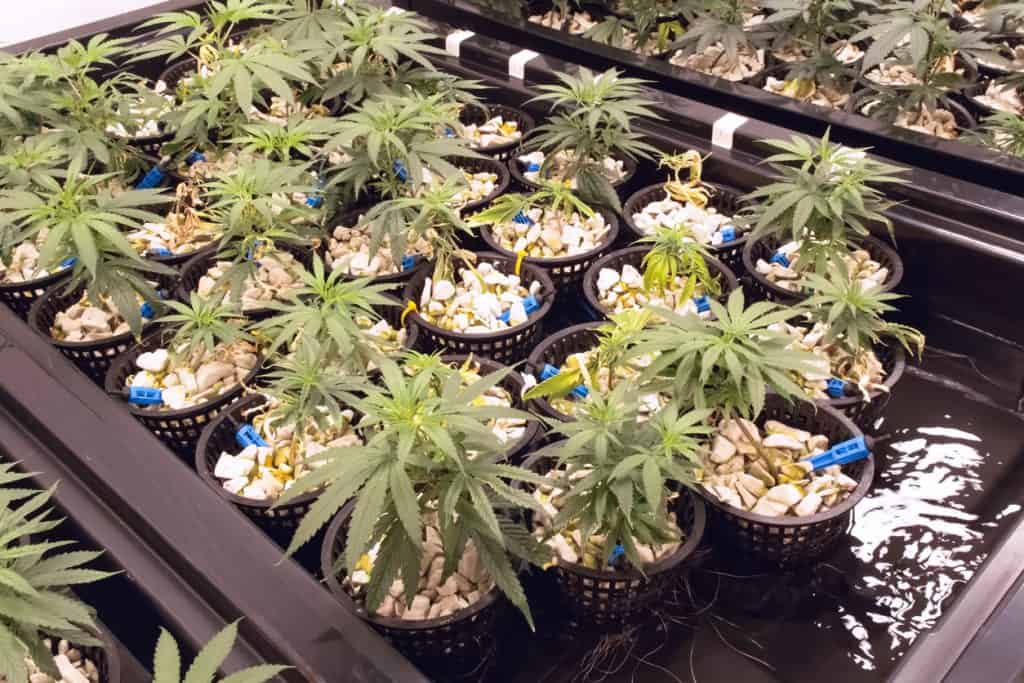
Proper Harvest Timing
The final tip for today that will help you increase your cannabis yields is to make sure to harvest the buds at the right time. Generally speaking, there is about a three-week window where the cannabis plants are ready for harvesting.
Waiting just a little longer, until the three-week mark as opposed to already harvesting in the first week, can increase yields by as much as 25%. Just make sure that you don’t wait too long, or else the THC may start to dissipate. Cannabis growers everywhere know what the proper harvest time is essential to determine, especially for indoor plants.
Conclusion
With all of the information provided above, you should now have at least a few viable methods for you to increase the overall yields of your cannabis plants, particularly when it comes to high stress training and low stress training. Using training methods is by far your best bet, and the more plants you have, the bigger your yield will be.
The best case scenario is that you use a variety of these methods in combination, which should exponentially increase your cannabis yields, whether for a few small plants indoors or a whole lot of outdoor cannabis plants.

